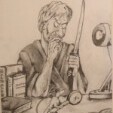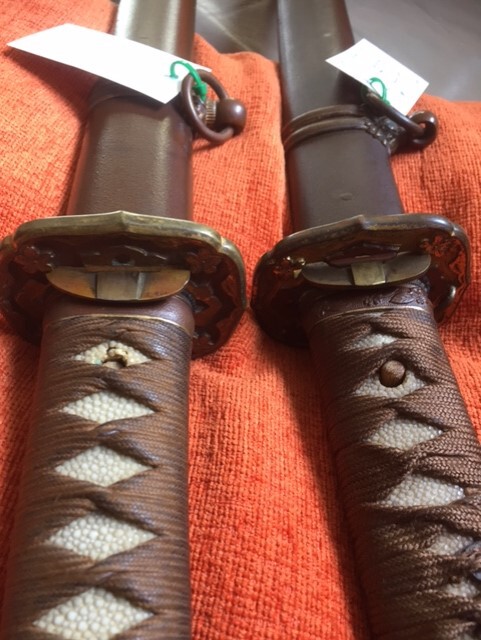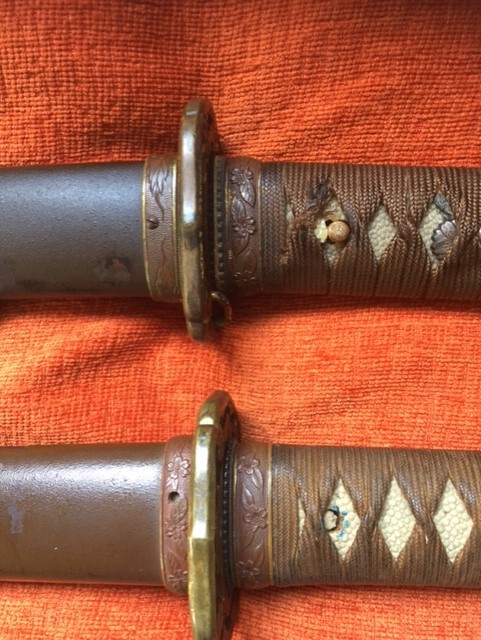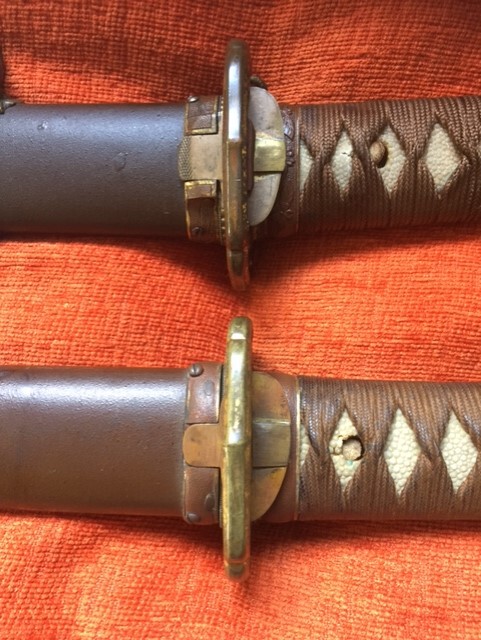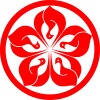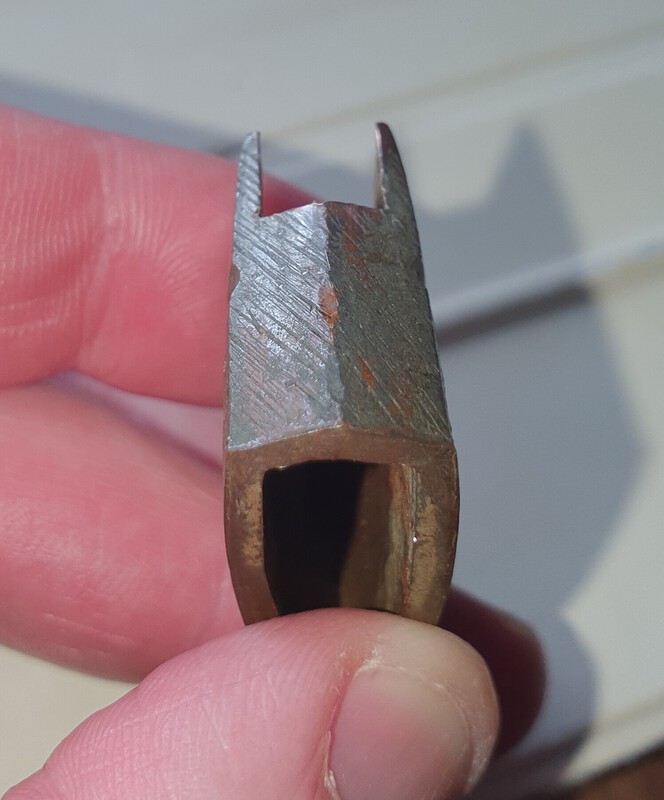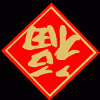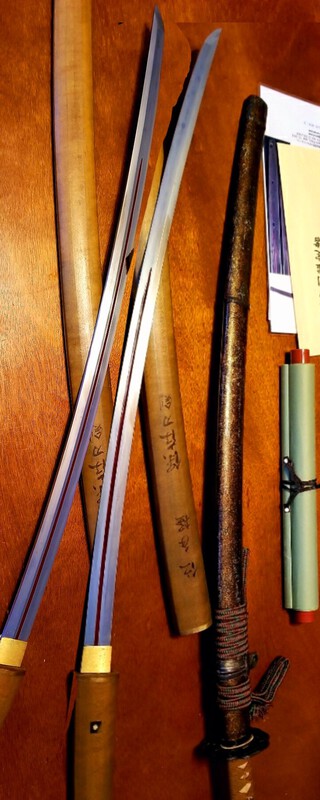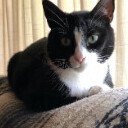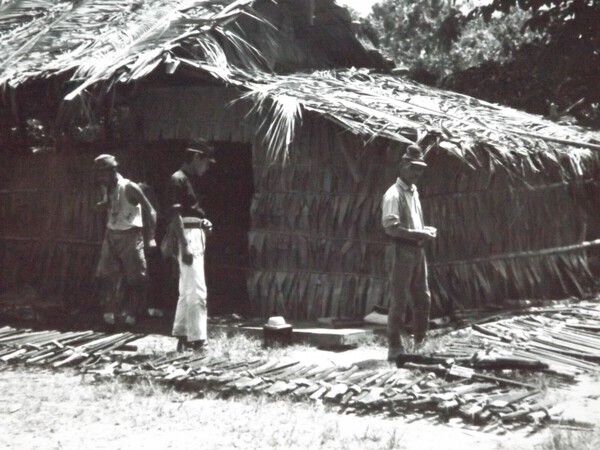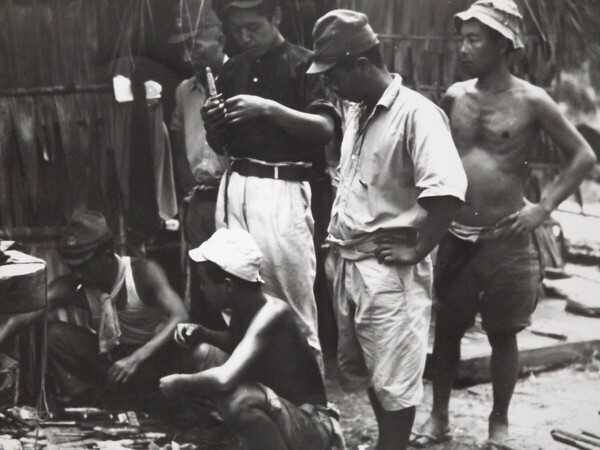Leaderboard
Popular Content
Showing content with the highest reputation on 08/26/2020 in all areas
-
There has been a great deal of discussion around what one should collect, how one should collect and what is right and wrong. Having been caught up in that debate, in some cases rather uncomfortably, I have taken some time to think about what I do and how I do it, to try and create a framework to help me understand the reasoning behind choices made. Collecting in any field is multi-facetted and everyone is motivated by different things. I think this why misunderstandings and sometimes arguments occur. Debates as to whether something should be polished or otherwise restored often occur because of these differences. For some it is purely a financial decision, for others more emotional and driven by more abstract concepts. While there should be no debate as to how something should be restored, i.e. by someone qualified to do it, there will always be varying views on whether something should be restored or simply conserved. For the sake of transparency I should confirm that my own collection has evolved over almost 40 years. It started as many do by buying anything that appeared to be Japanese and sharp. I accumulated a number of not very good swords. As I learned more and looked at more good swords my searches refined in to some specific areas. About 15 years ago I took the decision to reduce the number and improve the quality of what I held. I did this fairly ruthlessly over the next three or four years until I had what I believed to be the best examples I could afford of the schools I was interested in. Since reaching that point I have added one further blade that I regard as an important addition, but also two or three others simply because I found them interesting or enjoyed what I was seeing in them. Within my current collection which is predominantly work from the Koto period I have two signed koto works and one signed Shinto piece. The remainder are all o-suriage with the exception of an ubu, mumei shin-shinto work. While I am reluctant to say I have stopped collecting I do pretty much believe I have reached the end point in what I can achieve. While it would be foolish to say I will never buy another sword I certainly have no plans or immediate ambition to do so. Having reached this point I have looked at what I believe to be important in this pursuit and how it should be approached. I must also make it clear that this is a personal view; it is not a recommendation, instruction or any form of guidance. It is an explanation of how I have collected. Basic rules to myself: 1. Always study the very best examples of blades that you can find. Take every opportunity you can to look at good quality workmanship. This may be at a museum (although access can prove problematic) viewing days at auctions (less frequent and poorer quality than they used to be) and at sword events and shows such as the DTI, S.F. show and other specialist fairs. Or if lucky looking at swords in other enthusiasts’ collections. 2. Also look on line. The quality of blades published on various websites is exceptional and the images first class. While this is not a substitute for looking at good pieces in hand it is a useful addition and greatly broadens the opportunity to see works that might otherwise not be available. However also be aware that images can be and sometimes are doctored or modified by less scrupulous dealers. By doing the above one can identify which aspects of a sword have the greatest appeal. In good quality blades features such as utsuri, activity within the jigane and hamon etc. are generally more clearly visible and identifiable. Having seen them clearly in these pieces it is easier to identify them in lesser work, or pieces in less than perfect polish. 3. Once you have identified what you like and want to add an example to your collection find the best example you can afford. As has often been said patience is required. By waiting and saving a little longer a better example may become available. However one also needs to be realistic in setting targets and what can be achieved. 4. One of the challenges a collector will ultimately face is that as they learn more they become more discerning and as one colleague once put it “their knowledge surpasses their budget”. As understanding increases one often hears of collectors refining their collection and moving toward the “fewer good quality pieces are a better collection than many mediocre” concept. 5. But then there comes the odd ball. Occasionally, albeit increasingly rarely, a piece may appear that does not fit in to the criteria identified above but it just appeals. It has features that can be enjoyed and appreciated. It doesn’t have to be a great work or by a recognised master it is simply a good thing. However that assessment is not based on “I just buy what I like” it is a view formed after following the steps above and after time studying good workmanship. The nearest comparison I can make is in painting or sculpture. I know the masters I really love and study as much as I can. That study does not stop me appreciating work by lesser painters or from buying work that appeals. Adding this to a collection does not necessarily improve it, add to ones education or understanding, but it can enhance enjoyment. Put simply it can just be a beautiful thing and can be appreciated for that alone. So do I always stick to the above? No, I am human and sometimes for all sorts of reasons I take a flyer, thinking I see something in a particular piece that could make it worthwhile. More often than not I am wrong but I learn though the process. Fortunately that hasn’t happened too often. However if I do get it wrong one thing I have not, nor will I do, is try and pass on my mistake to someone else. If you gamble and it fails live with the consequences. I think we are all motivated by different aspects of collecting. My approach will be different to many and similar to others. There is not a wrong or right way. The important thing is that whichever route one chooses to follow is based on an understanding of the subject and of one’s motives for collecting. Once those are understood it is much easier to enjoy the process.9 points
-
I'm sure all of you know and have interacted with Ray Singer and Swords of Japan before. He appears to be a respected voice on these boards and I am sure others as well. I became acquainted with Ray as of some direct information I picked up here with the suggestion to purchase an initial sword from someone on this site. Based on that information, I went to the Swords of Japan website and found a beautiful Takada Muneyuki Katana in a very reasonable range. After some initial discussions with Ray, including some wonderful background on the sword and the smith I decided to purchase the sword. That's where it all went downhill, for the sword. The transaction was professional and quick with the sword shipped to my house quickly thereafter. Sometime after it was dropped off at USPS, the sword fell out of the system. No scans were made, the delivery date came and went. This went on for a little over 5 weeks on a shipment that should have taken 4 days. During this whole time, Ray was working the system trying to find information for me to keep me up to date with the results. All told, he said he spent 50 hours on the phone with the USPS. Well, after 5 weeks, he finally decided all avenues had been exhausted and decided to make an insurance claim. Well as usually happens when that type of decision is made, USPS decides to walk up to my house and drop off the sword. The package was a little beat up but the sword inside was well packaged and unharmed. I really appreciate the efforts that Ray went through to make this happen. Most would have thrown up their hands after a week. With that, as long as I am in this hobby he has a customer. There is too much negative in this world and sometimes it's nice to focus on the positives. Jim Blubaugh2 points
-
The address is the same for both the advertisement and the Iida patent. So they are related. The company name in the advertisement is Iida Shop Unlimited Partnership 合名会社・飯田商店. The translation of the latch can be found at the thread below. "Iida Kunitaro Gunto Koshirae - Help" https://www.militaria.co.za/nmb/topic/18110-iida-kunitaro-gunto-koshirae-help/ I am sure SteveM and BangBangSan will be along shortly to fill in some more gaps.2 points
-
See photos. I have some of the uncommon Iida latch type Guntos and have a question about their differences in design. There are subtle differences in their design and function. No knurling on one, no patent number on another, different hardware used. I was told that the one with no numbers could be a prototype or a manufacture before patents were issued. It may also be from another manufacturer as there are many subtle design differences between the two. Any help would be appreciated.1 point
-
..https://artsandculture.google.com/exhibit/treasures-of-temples-and-shrines/hwKyGKCr7r_XJw Best1 point
-
Ive got an old Tachi mei sword that's had its mei folded over. So now it's katana mei. It's now 70.25cm with a 19cm nakago. I'm guessing for the mei to be in roughly the right place 33cm of original sword has been removed.so is missing 14cm. So in total the cutting edge was 84cm approx. Can anyone kantei the sugata to a period? It's a very clear omaru boshi. It's in an old Japanese sashikomi polish I think. I'm not sure what to call the hamon. It's thick at 6mm at Mune with the nakago at 7mm at the widest point midway. I'm thinking of its prospects for shinsa.1 point
-
Katana-sized iron Tsuba with unusual sheen metal insert. This tsuba attracted me simply because it was a little unusual. Unsigned, but it has 5 ancient Kanji on one side of the insert. (Clouds on the reverse?) Chinese style gold zogan decoration around square mimi. Can anyone decypher/decipher these characters? And what kind of Tsuba is this, I wonder? Some kind of Nanban?1 point
-
The blade is Ishido shinto school, the signature is Muromachi-ish Bizen style, but it does not seem to be a perfect match for the blade's work. Kirill R.1 point
-
1 point
-
Forgive me Ray but I am not sure how specifying my collection in detail reinforces the points being made. I hope that the approach would hold true whether one is focusing at the top, middle or lower end of the market. Also I confess to be uncomfortable disclosing any collection mine or any other in detail on an open forum. Perhaps I am old fashioned but it doesn't quite seem to be the right thing to do. As an overview I have focused predominantly on Yamashiro work ranging in dates from early to late Kamakura period. I have also included work that I believe to be Yamashiro influenced such as Chu-Aoe and Enju. In addition I have an interest in Yamato so have examples of Hosho and Shikkake blades. For completeness and a similar vain to my good friend Jean, I have included Bizen and Mino examples to complete the Gokaden. My one shinto blade would be very familiar to you it is an Osaka Ishido wakizashi. The ubu shin-shinto work has been discussed here before. I chose the swords I did because in the main they exhibit the features I most value. strong and elegant sugata, good quality tightly forged ji-hada conservative suguha or gentle midare hamon ( even my Bizen blade is suguha) in ko-nie deki and a great deal of activity within the jigane. I am always drawn to tight ko-itame hada, before settling on Yamashiro I was a great Hizen fan (still am to some extent) not sure if this answers your question sufficiently but hope it helps.1 point
-
Hey Georg, what could you do to make the hamon visible: 1) use etchants (from lemon juice all the way to proper acid): in one word, “forbidden” 2) use polishing stones: reserved for polishers, so again, for the vast majority of us, “forbidden” 3) use uchiko: for blades out of immaculate or stabilised polish, one can argue, as the one in this topic here, it is OK, if the blade will hit the polishing stones referred to in 2) above anyway. However, plenty of posts on that topic in this forum. So, why do you need to refer to this anonymous “Kevin” is not clear. 4) oil, wipe, oil, wipe, oil, wipe,oil, wipe, etc. Repeat numerous times. Also mentioned on this forum numerous times. Again, no need for Kevin, but thank him anyway. 5) take photos at an angle, with the main light coming from behind you and another light source ahead of you and the sword tip pointing toward that other tip ahead of you. if there is no hamon (eg blade heated in some way and martensite decomposed back into austenite and pearlite) or the hamon has been polished away, you cannot see it.1 point
-
Hi Piers, Perhaps the five elements (think Miyamoto Musashi's Book of the Five Rings) in seal script.1 point
-
1 point
-
Well done ! The burs I think are the ha machi and mune machi and if right then they are intentionally done. The file marks on Habaki are also by design. Now you have the blade stripped down. It's a nice looking sugata.1 point
-
1 point
-
I would suggest that it is later war, and the blade one of those picked up in the sword collection/purchase drives that we now know about..... For those not familiar with what I was meaning here is a doc. from Mr Komiya, thought it appears that the blade is one of those rare genuine family blades. gunto call up 12-23-2017.pdf1 point
-
1 point
-
Thank you Thomas! I had one, but this one is a much better picture (plus, while switching them, I noticed I spelled Sadaroku wrong!). Now updated.1 point
-
Don't have anything to add of depth to this but I find the asymmetry of those blades absolutely beautiful. I personally find a little asymmetry amongst symmetry draws attention to the human hand/mind within the symmetry. Like seeing a painting in logic or something. My examples are just aesthetically assymetrical. One or both of which the horimono added much later. BaZZa, if you ever want to sell that blade please think of me. =|:^)1 point
-
Yeah, that is a bit rough. I've seen a lot of Shin Gunto, but usually not with the type of deep rust I see on the tang of this sword and the one you have. Worst one I had seen up until now was an example that used Cellulose Nitrate faux Ray skin. It outgassed and degraded, and turned the wrapping RED and it would disintegrate as it was touched. It also caused the entire tang to become rusted solid to the tsuka.1 point
-
Nice. I wonder if the Zunari-Kabuto was the model for Darth Vader's helmet in Star Wars? Rich1 point
-
hello, sorry if this hijacks the thread to a different direction. in looking at the picture of the nakago of that masanaga it seems like 3 or 4 words above masanaga was removed from the whole mei. and yasurime was applied over those removed mei. - does it seem like it was done intentionally? if so could anyone speculate as to why? - could it simply have rusted away or rubbed away in time? if so was it the norm to apply yasurime over it? just curious.1 point
-
Get a piece of wood and a small hammer. put the wood at the blade side of the habaki and gently tap down towards the nakago on that wood pushing the habaki that way. Keep checking your not damaging the habaki and keep changing the side of the blade you tap. It will come off. When it does clean the area it was on the blade with soap and water and an old toothbrush.same on the inside of the habaki.remove old rust. Don't worry about touching the blade other than to not cut yourself, you won't cause any damage significant to warrent that type of warning as the blade needs a polish anyway and that will take off surface steel.1 point
-
Dear Souledge, Penetrating oil is OK - just don't get it on the nakago (tang). There are many posts here on the NMB on how to remove a habaki (just search "stuck habaki" and require both words in the results). Don't touch the blade (except the kakago/tang) with your bare hands - the oils and salts from your hands will cause additional damage (I know it's already pretty rusted, but you don't want to add to it). Look in the faqs for an article by Grey about how to handle and protect your sword. Here's a good post on removing a stuck habaki that I found: https://www.militaria.co.za/nmb/topic/22966-how-to-remove-a-habaki/?tab=comments#comment-2328661 point
-
1 point
-
Mea Culpa, I was referring to "I particularly like the shells holding the kashira on" and like Rodger, didn't see the abalone.1 point
-
Yasaka san wrote: > BaZZa san. Please make up for a little confusion and unclear understanding of terms, and I want to ask for forgiveness with my weird English. Yasaka san and all, please forgive my confusion - I'm old and often put my keyboard into gear before engaging my brain, in other words I thought without thinking!! Even having an asymmetric katana with shinogi tsukuri/kata shinogi tsukuri I still get confused... Here is my sword: BaZZa.1 point
-
1 point
-
Hi Jim, thank you for sharing the story here and I am just relieved that the sword finally arrived. I will add to this that I needed to open investigations three times with USPS. The cases would be under investigation for a week at a time with no progress or call-backs, and then were simply closed. After this I opened investigations with Consumer Affairs first at the Florida side of the journey and then the California side. In retrospect, perhaps I should have initiated the claim at an earlier point but I continued to receive promises of a call-back "soon" with additional information, which were never fulfilled. As I told Jim in my last email, I am grateful and appreciative of his patience and understanding throughout this long process. Best regards, Ray1 point
-
I would like here to thank Dale/Spartancrest for the extra effort and trouble he went to to get me a copy of his book (above) i.e Additional Articles for Tsuba Study. A great compilation of information and illustrations mostly noted in the period 1880s through to 1920s when Japan was still a delightful (mostly pre industrial) country. A great contribution by Dale to the world of nihonto collecting. Thanks . So many members have been more than helpful, so thank you all. Jean in his Deep Valley, Leporello , BaZZa in his mountain home. Roger j1 point
-
Does anyone have a sword with a Buka Island tag on it? Buka Island is at the northern tip of Bouganville . At the end of the war the northern part of Bouganville and Buka island were garrisoned by the 87th Naval Garrison unit commanded by Captain Kato . The 32nd Navy pioneers and the 211 Navy pioneers had been combined into this unit . It was said that it consisted of civilians with Naval regulars as NCO's and officers .The units strength was said to be 1000 Naval troops and 2000 civilians. Following the surrender officers from the Australian 2 Corps HQ visited Buka on an inspection tour.. There is a series of photographs at the Australian War Memorial taken at this time showing surrendered swords arrayed alongside a grass hut with Japanese troops looking for their swords to affix the tags to . The photos were taken on the 19th of September 1945 .The swords were later taken to 2 Corps HQ where they were distributed . The tags are all relatively similar . They are on a piece of wood about 9cm by 2.8 cm. On one side written in Japanese is the officers name branch of service and rank . On the reverse in English is a space for a number to be inserted and an English translation of the information on the other side . The number is filled in in a different pencil and is sometimes absent . The translated names are written western style with the forename and then the surname ,as i have done . Over the years I have made a note of these swords when I have come across them. In numerical order these are No 4 Staff Surgeon Takahashi Shin gunto , showa blade No 3837 Sub officer Takashi Hisamatsu Shingunto showa blade No 83 Surgeon Hideo Okamura . Katana style mounts, blade by Hizen Kanehiro with a huge bullet scar on it No 147 Surgeon ( I didn't note the name ) Tachi mount with shakudo nanako fittings with gold clove ( ? ) design . Mumei grooved suriage blade . A fine piece . No 161 1st Lieutenant Akina Saka . Naval kyugurto with mumei suriage shinto blade . This sword was once owned by Field Marshal Sir Thomas Blamey. No 179 Chief technical warrant officer Kenzo Obe , gunto style mount with mumei old blade No 189 Commander Shiro Suzuki . Shingunto with a gendai blade by Oshu Masatomo. No 227 1st warrant officer ambulance Kichitaro Ogawa. Old blade in saya no other mounts No number Captain Masahira Ikeda . Kaigunto mount . Blade signed Kaneuji and dated 1331 . A showa fake . The mounts all have the name Ikeda scratched on them No number (split tag ) Ist Lieutenant Seiji Okamoto . Kai gunto ,old mumei blade No number equipment 1st warrant officer Matao Amida , Katana style mount with old mumei blade No tag or Number Paymaster Lt Commander Shimao Suzuki ,tanto in shirasaya blade by Hosokawa Masamori .Details written on the Shirasaya . Nice piece It is interesting just how many of what were apparently naval troops were carrying shingunto . Ian Brooks1 point
-
Dear Colin, Most tsuba that have this "Chinese Landscape" scene with a solitary person on a mountain path with a temple/pagoda at the top are references to Mount Hōrai (Mount Penglai). As one of our most scholarly and humorous members (Guido Schiller) taught us years ago in reference to "Hōrai Tsuba": "蓬莱 Hōrai is a legendary, holy Chinese mountain in the Eastern Sea that is often visited by hermits. 鶴亀 tsurukame (crane and turtle) are symbols of a long life. They both can be synonymous for each other, so tsuba that have a motif of crane and/or turtle and/or rocks and/or pine trees and/or bamboo are often referred to as 蓬莱図 (Hōrai-zu)." However, in this particular case, I think your tsuba refers to Dewa Sanzan - a set of three holy mountains in Japan that have been the location of a rebirth pilgrimage for the past 1,400 years. These mountains were visited by royalty and poets (including Basho), and near the top of one of the mountains there is a famous pagoda partially hidden among ancient cedars and a temple. At the foot of the mountains there is a lake with an old teahouse that juts out over the water. That appears to contain all the elements of your tsuba. Your Tsuba: Mount Hōrai Tsuba: Dewa Sanzan Drawing (showing slopes that match your tsuba):1 point
-
To answer your specific question: Value wise, if it is a high end name then it is greatly affected. If just an average smith for an average collector then likely not a huge amount. It all depends on what the target market is.1 point
-
Dear Robert. As with all questions in this pursuit there are many answers. Machi okuri can be anything between a few millimetres, which most wouldn't even notice to quite a lot, which would be more obvious. Machi okuri suggests that the end of the nakago is unaltered so you should have the full nakago and mei of the smith. In this case I wouldn't bat an eyelid if I liked the sword or the smiths work. Once the nakago becomes suriage then purists will start to get picky. This was recently justified on the basis that there are so many Shinto swords out there why not wait for a completely unmodified example? Personally I love this view point, it means that I can get a chance at some really good swords that fail this test and are consequently more affordable. If it is a sword by a prolific mid range smith then some people will want to hang out for ubu and might be bothered by machi okuri, I suspect that there are quite a lot of us who wouldn't let it bother us very much. I wait for the true collectors to tell me how wrong I am. All the best.1 point
-
I don't see any place that photos of a Ryokai from Darcy were shown. Everything is separated out in Jean's post on his collection, with comments that are clearly identified with the name/atttribution for each sword. I assume that you are referring to the Tametsugu which is labelled as such. Regardless, it is nighttime where Jean is so I will copy over the information from his post and hopefully it will be clear. Ryokai is a smith apart in the Yamashiro Rai school, even NBTHK hesitates sometimes to classify some of his works in Rai school. You will notice that he is the only smith in the Rai school not to use the Rai name and the kanji Kuni in his name, same for his lineage, his son Hisanobu and grandson Nobukuni. In fact Ryokai swords are either Yamato influenced or Rai oriented. Compare to Yamato Tegai, Ryokai hada has very fine ko nie, sugata is slender and usually his swords have a strong sori. His hada is characterised by the mix of itame/ko itame and masame or itame nagare and a shirake utsuri, some fine chikei can be found. In the ha some ashi can appear and ko choji, hotsure. The nioiguchi is tight and somewhat subdued. A comment from NBTHK on a Ryokai sword: " in short, the jiba is not as bright and clear as we would expect it from a Rai work. So the tachi is a work of Ryokai who was a Yamashiro smith too. As mentionned, the jiba of for example Kunitoshi, Kunimitsu and other Rai smiths would be clearer and brighter, the nioiguchi would be wider and more nie and hataraki would appear within the ha." ryokai.pdf Ryokai-juyo.pdf Ryokai-juyo2.pdf1 point

